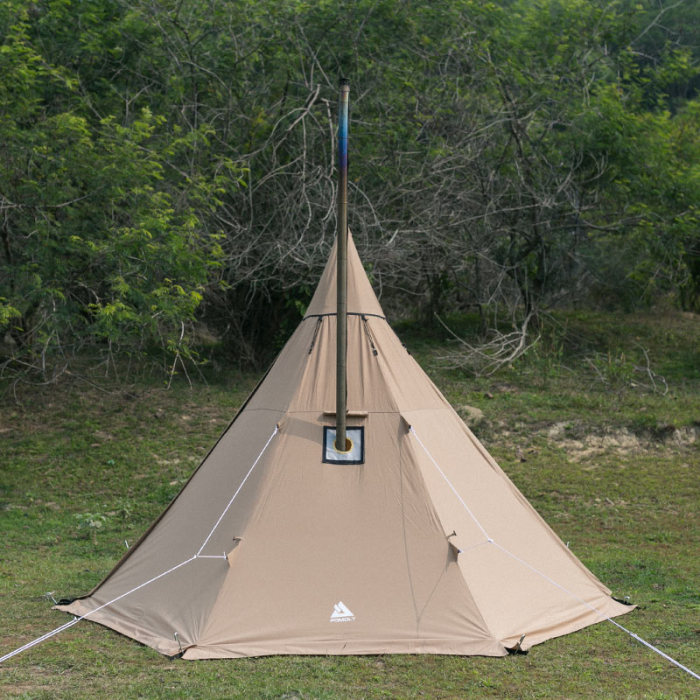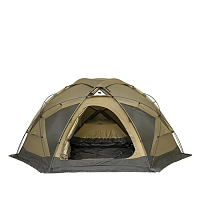Cart
How to Use the Stove Jack Correctly: A Comprehensive Guide

If you're an outdoor enthusiast who enjoys camping in cold weather, a stove jack is an essential component of your camping gear. The stove jack allows you to safely and efficiently use a wood-burning stove inside your tent, providing warmth and comfort during chilly nights. In this article, we will guide you through the correct usage of a stove jack, ensuring a safe and enjoyable camping experience.
1. Understanding the Stove Jack:
2. Choosing the Right Stove Jack:
3. Proper Placement and Installation:
- a. Positioning: Choose a suitable location for the stove jack, considering factors such as tent design, interior space, and safety. Most tents have designated areas or pre-installed stove jacks for seamless integration.
- b. Marking and Cutting: Once you have determined the ideal location, mark the position of the stove jack on the tent fabric. Use a sharp utility knife or specialized fabric-cutting tool to carefully cut a precise hole following the manufacturer's guidelines.
- c. Sealing: After cutting the hole, it's crucial to seal the edges of the stove jack to prevent water leakage and maintain the tent's integrity. Apply a high-quality silicone sealant or use a stove jack installation kit that includes a sealing collar for added protection.
4. Connecting the Stovepipe:
- a. Stovepipe Length: Ensure the stovepipe extends above the tent's roofline to prevent smoke from re-entering the tent. The recommended length is typically 12-18 inches above the tent's highest point.
- b. Attachments and Support: Use stovepipe brackets or guy lines to secure the stovepipe and provide stability. This will prevent accidental tipping and ensure the stovepipe remains in place during use.
- c. Heat Protection: To avoid any fire hazards, ensure that the stovepipe is positioned away from flammable materials, such as tent walls, fabric, or overhanging branches. Regularly inspect the stovepipe for any signs of damage or wear and address them promptly.
5. Safety Precautions:
- a. Proper Ventilation: Ensure your tent has sufficient ventilation to allow for the proper exchange of air. This will help prevent the accumulation of carbon monoxide and maintain a safe camping environment.
- b. Fire Safety: Always maintain a safe distance between the stove and tent walls or other flammable materials. Keep a fire extinguisher or a fire-resistant blanket nearby in case of emergencies.
- c. Monitoring and Maintenance: Regularly monitor the stove and stovepipe during operation to ensure they are functioning efficiently. Clean the stovepipe regularly to remove any creosote buildup that can pose a fire hazard.
Conclusion:
By understanding and correctly using a stove jack, you can enjoy the warmth and comfort of a wood-burning stove during your camping adventures. Remember to choose the right stove jack, install it properly, connect the stovepipe securely, and prioritize safety at all times. With these guidelines in mind, you can have a safe and enjoyable camping experience, even in colder temperatures.
- Contact Us
-

About Pomoly
Pomoly is a leading camping brand specializing in hot tents and tent stoves. We are camping life explorer, Follow Page / Join Group, let's make camping enjoyful together!
Working Hours
Mon-Fri, 09:00 - 17:00

- Company Info
- NEWS
- About us
- Pomoly Name
- Leave-No-Trace
- Contact Now
- Facebook Group
- YouTube Learning
- Contact Us
- Topic Collections
- Policies & Terms
- Payment Policy
- Shipping Policy
- Return & Refund
- Privacy Policy
- Terms of Use
- Tax Policy
- Website Disclaimer
- Safety Disclaimer
- Warranty Policy
- Promotion Policy
- Pre-order Policy
- INTELLECTUAL PROPERTY RIGHTS
- Dealers Agreement And Terms
- Become Affiliate
- User Center
- Forget Password
- My Orders
- Tracking Order
- My Account
- Register
- Popular Searches
-
Tipi Tents Dome Tents Camping Tent Hammock Stove Camping Camping Pellet Stove Circle 6 Titanium Water TankDome X Locomotive 20 LEO 2 camping tent T-Brick 2.0 T1 2.0 tent stove Dweller wood stove Oroqen 2.0 Chimney Water Tank Lumberjack STOVEHUT Bromance 70 Tipi Pomoly Coupon Baker Oven Stove Titanium elbow Fire Pits Tent Stove titanium Stove Outdoor Pellet Stove
keebon pellet stove






